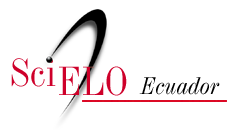Detección de fallas en bombas hidráulicas de pistones axiales: integrando análisis de componentes principales con la evaluación de clústers basada en siluetas
DOI:
https://doi.org/10.29019/enfoqueute.1120Palabras clave:
Análisis de Componentes Principales, Análisis de Silueta, Detección de fallas, Bomba Hidráulica de PistonesResumen
Este artículo presenta un enfoque que integra el análisis de componentes principales y el análisis de siluetas con algoritmos de agrupamiento para la detección de fallos en sistemas hidráulicos. La metodología se validó a través de un estudio en el que se recopilaron señales de vibración y presión en condiciones normales y de fallo. Estas señales fueron procesadas mediante filtrado y normalización, seguidos de una reducción de la dimensionalidad con el análisis de componentes principales. Los vectores de características de menor dimensión resultantes conservaron las características críticas tanto de las condiciones normales como de las defectuosas y posteriormente se introdujeron en un algoritmo de agrupación. La calidad de los conglomerados resultantes se evaluó con el análisis de siluetas, que ofrece un método fiable para evaluar la calidad de los conglomerados y visualizar los resultados de la clasificación de fallos. El estudio demuestra la eficacia de este método a la hora de representar con precisión los patrones de las condiciones normales y defectuosas de las bombas hidráulicas, lo que en última instancia conduce a resultados de diagnóstico satisfactorios.
Descargas
Referencias
[1] S. Liu et al., A new test method for simulating wear failure of hydraulic pump slipper pair under high-speed and high-pressure conditions, Front. Energy Res., vol. 10, no. January, pp. 1-14, 2023, https://doi.org/10.3389/fenrg.2022.1096633
[2] M. T. Amin, F. Khan, S. Imtiaz and S. Ahmed, Robust Process Monitoring Methodology for Detection and Diagnosis of Unobservable Faults, Ind. Eng. Chem. Res., vol. 58, no. 41, pp. 19149-19165, 2019. https://doi.org/10.1021/acs.iecr.9b03406
[3] G. Patterson-hine, G. Aaseng, S. Biswas, S.Narasimhan and K. Pattipati, “A Review of Diagnostic Techniques for ISHM Applications”, NASA Ames Res. Cent. Honeywell Def. Sp. Electron. Syst., vol. 1, 2005.
[4] J. Watton, Modelling, Monitoring and Diagnostic Techniques for Fluid Power Systems. Wales: Springer, 2007.
[5] V. K. Kandula, Fault detection in process control plants using principal component analysis (LSU Master’s Theses). 2011.
[6] I. T. Jolliffe, “Principal Component Analysis, Second Edition”, Encycl. Stat. Behav. Sci., vol. 30, no. 3, pp. 487, 2002. https://doi.org/10.2307/1270093
[7] J. Mina and C. Verde, Detección de fallas usando análisis de componentes principales, pp. 431-436, 2004. Instituto de Ingeniería, UNAM.
[8] L. Siyuan et al., “Application of PCA for fault detection in Hydraulic Pumps,” Journal of Hydraulic Engineering, vol. 15, no. 4, pp. 234-245, 2010.
[9] L. Siyuan et al., “Rough Set and PCA for fault diagnosis in hydraulic systems”, International Journal of Fluid Power, vol. 10, no. 2, pp. 50-160, 2012.
[10] M. A. Atoui et al., “Bayesian Networks and PCA for fault detection in Tennessee Eastman Process,” AI in Manufacturing, vol. 5, no. 1, pp. 45-58, 2015.
[11] Villegas et al., “PCA application for fault detection in real plants”, IEEE Transactions on Industrial Applications, vol. 29, pp. 255-263, 2017.
[12] A. Hichri, M. Hajji, M. Mansouri, H. Nounou and K. Bouzrara, “Supervised machine learning-based salp swarm algorithm for fault diagnosis of photovoltaic systems”, J. Eng. Appl. Sci., vol. 71, no. 1, pp. 1-17, 2024, https://doi.org/10.1186/s44147-023-00344-z
[13] X. Ying Huang, H. Xia, W. zhe Yin and Y. kuo Liu, “Research on fault diagnosis and fault location of nuclear power plant equipment”, Ann. Nucl. Energy, vol. 205, no. April, p. 110556, 2024, https://doi.org/10.1016/j.anucene.2024.110556
[14] H. Zhao et al., “PCA and Salp Swarm Algorithm for fault detection in photovoltaic systems”, Renewable Energy, vol. 23, pp. 98-107, 2019.
[15] Y. Cardenas, G. Carrillo, A. Alviz, A. Alviz, I. Portnoy, J. Fajardo, E. Ocampo and E. Da-Costa, “Application of a Pca-Based Fault Detection and Diagnosis Method in a Power Generation System With a 2 Mw Natural Gas Engine”, EUREKA, Phys. Eng., vol. 2022, no. 6, pp. 84-98, 2022, https://doi.org/10.21303/2461-4262.2022.002701
[16] B. Xu, X. Huang, J. Zhang, W. Huang, F. Lyu and H. Xu, “A Fault Detection Method for a Practical Electro-Hydraulic Variable-Displacement Pump with Unknown Swashplate Moment”, IEEE Trans. Instrum. Meas., vol. 72, pp. 1-11, 2023, https://doi.org/10.1109/TIM.2023.3265090
[17] J. G. Maradey Lázaro and C. Borrás Pinilla, “A methodology for detection of wear in hydraulic axial piston pumps”, Int. J. Interact. Des. Manuf., vol. 14, no. 3, pp. 1103-1119, 2020, https://doi.org/10.1007/s12008-020-00681-w
[18] H. Yu, H. Li, and Y. Li, “Vibration signal fusion using improved empirical wavelet transform and variance contribution rate for weak fault detection of hydraulic pumps”, ISA Trans., vol. 107, pp. 385-401, 2020, https://doi.org/10.1016/j.isatra.2020.07.025
[19] A. Dabrowska, R. Stetter, H. Sasmito and S. Kleinmann, “Extended Kalman Filter algorithm for advanced diagnosis of positive displacement pumps”, IFAC Proceedings, vol. 45, no. 20, https://doi.org/10.3182/20120829-3-MX-2028.00068
[20] J. Konieczny and J. Stojek, “Use of the k-nearest neighbour classifier in wear condition classification of a positive displacement pump”, Sensors, vol. 21, no. 18, 2021, https://doi.org/10.3390/s21186247
[21] J. M. Liu, L. C. Gu, and B. L. Geng, “A practical signal processing approach for fault detection of axial piston pumps using instantaneous angular speed”, Proc. Inst. Mech. Eng. Part C J. Mech. Eng. Sci., vol. 234, no. 19, pp. 3935-3947, 2020, https://doi.org/10.1177/0954406220917704
[22] J. Konieczny, W. Łatas, and J. Stojek, “Classification of Wear State for a Positive Displacement Pump Using Deep Machine Learning †”, Energies, vol. 16, no. 3, pp. 1-19, 2023, https://doi.org/10.3390/en16031408
[23] R. A. Galo Fernandes, P. M. Silva Rocha Rizol, A. Nascimento, and J. A. Matelli, “A Fuzzy Inference System for Detection of Positive Displacement Motor (PDM) Stalls during Coiled Tubing Operations”, Appl. Sci., vol. 12, no. 19, 2022, https://doi.org/10.3390/app12199883
[24] C. Liu, J. Bai, and F. Wu, “Fault Diagnosis Using Dynamic Principal Component Analysis and GA Feature Selection Modeling for Industrial Processes”, Processes, vol. 10, no. 12, 2022, https://doi.org/10.3390/pr10122570
[25] Y. Huo, Y. Cao, Z. Wang, Y. Yan, Z. Ge, and Y. Yang, “Traffic anomaly detection method based on improved GRU and EFMS-Kmeans clustering”, Comput. Model. Eng. Sci., vol. 126, no. 3, pp. 1053-1091, 2021, https://doi.org/10.32604/cmes.2021.013045
[26] J. Wu, Advances in K-means Clustering a Data Mining Thinking. Springer-Verlag Berlin Heidelberg, 2012.
[27] C. Dong, J. Tao, H. Sun, Q. Wei, H. Tan, and C. Liu, “Innovative fault diagnosis for axial piston pumps: A physics-informed neural network framework predicting pump flow ripple”, Mech. Syst. Signal Process., vol. 225, no. January, p. 112274, 2025, https://doi.org/10.1016/j.ymssp.2024.112274
[28] Z. Dong, H. An, S. Liu, S. Ma, Y. G, H. Pan and Ch. Ai, “Domain adversarial transfer fault diagnosis method of an axial piston pump based on a multi-scale attention mechanism”, Meas. J. Int. Meas. Confed., vol. 239, no. July 2024, p. 115455, 2025, https://doi.org/10.1016/j.measurement.2024.115455
[29] D. Ling, T. Jiang, Y. Zheng and Y. Wang, “An adaptive mode identification and fault detection scheme for nonlinear multimode process monitoring using improved DPC-KPCA”, J. Taiwan Inst. Chem. Eng}., vol. 169, no. January, p. 105915, 2025, https://doi.org/10.1016/j.jtice.2024.105915
Descargas
Publicado
Número
Sección
Licencia
Derechos de autor 2025 Los Autores

Esta obra está bajo una licencia Creative Commons Reconocimiento 3.0 Unported.
Los autores retienen todos sus derechos (© copyright).
- Los autores retienen sus derechos de marca y patente, y también sobre cualquier proceso o procedimiento descrito en el artículo.
- Los autores retienen el derecho de compartir, copiar, distribuir, ejecutar y comunicar públicamente el artículo publicado en Enfoque UTE (por ejemplo, colocarlo en un repositorio institucional o publicarlo en un libro), siempre que se dé el reconocimiento de su publicación inicial en la revista Enfoque UTE.
- Los autores retienen el derecho a hacer una posterior publicación de su trabajo, de utilizar el artículo o cualquier parte de aquel (por ejemplo: una compilación de sus trabajos, notas para conferencias, tesis, o para un libro), siempre que indiquen la fuente de publicación (autores del trabajo, revista, volumen, número y fecha).
























